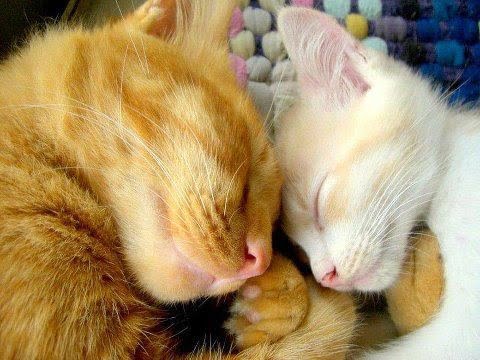Someone, somewhere asked whether they can adopt a cat who is not declawed when their resident cat is declawed. The short answer is yes you can. The reasons are as follows.

Firstly, it’s probably unwise to think about an incoming cat fighting with a resident cat and using that potential problem as a way to decide which cat to adopt. It’s better to presume that they won’t fight by sticking to due diligence in selecting a cat which will get on with the resident cat.
Secondly, you can keep the claws of the incoming cat trimmed which will obviously blunt their effectiveness as weapons.
Clearly you should not contemplate any way whatsoever declawing the incoming cat.
Thirdly, domestic cats are incredibly rarely (thankfully) declawed on all four paws. In a fight most damage is inflicted by the hind legs when raking the other cat with rabbit kicks. The paws of the hind leg not being declawed are useful weapons and therefore when you combine that with a declawed cat’s teeth, you can be confident that she can defend herself.
Perhaps the key to the answer as to avoid even the possibility of a fight by careful selection and introduction of an incoming cat. This would preclude the need to discuss the question in the title. If resident and incoming cat fight viciously I would consider it to be a failure of bigger proportions than the declawed cat being hurt by the incoming fully clawed cat.
Secondary Issues?
It may stretch the imagination but there may be some secondary issues. Let’s presume for a moment that the veterinarian who declawed the resident cat botched the operation which, through my experience in writing this website, is not particularly uncommon. Should this be the case the resident cat will be enduring problems of discomfort, even constant pain and this will affect his behaviour. One well-known problem is a propensity to bite. Declawing can make a nice cat an unpleasant cat and that’s the fault of people.
For example, a declawed cat may require different litter to a non-declawed cat to accommodate sore feet. The default situation, in any case, is to have two litter trays if there are two cats but if the owner was thinking about having one litter tray then that may be a bad idea.
The declawed cat may have tender paws which means that if he plays with the other cat it may hurt him. This may provoke aggression or timidity and fear. I don’t know what the reaction might be. I believe that there are many declawed domestic cats with complications arising out of the operation which endure for many years without the knowledge of the cat’s guardian. This means that untoward behaviour due to the declawing operation may become evident on the introduction of a new cat notwithstanding that they get along well.
[weaver_breadcrumbs class=’alt-class’ style=’inline-style’]
[weaver_show_posts cats=”” tags=”declawing-cats” author=”” author_id=”” single_post=”” post_type=” orderby=”date” sort=”ASC” number=”2″ show=”full” hide_title=”” hide_top_info=”” hide_bottom_info=”” show_featured_image=”” hide_featured_image=”” show_avatar=”” show_bio=”” excerpt_length=”” style=”” class=”” header=”” header_style=”” header_class=”” more_msg=”” left=0 right=0 clear=0]
